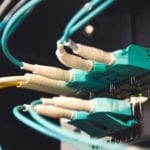
5G Networks Demand More From Cables and Connectors
A new generation of fiber optic cable and high-speed connectivity products is laying the groundwork required to make 5G networks possible. Providers of fiber optic cables, high-speed connectors, and cable management systems are all gearing up to meet the challenges of developing the infrastructure required for 5G network deployment. The impending arrival of 5G networksRead More















